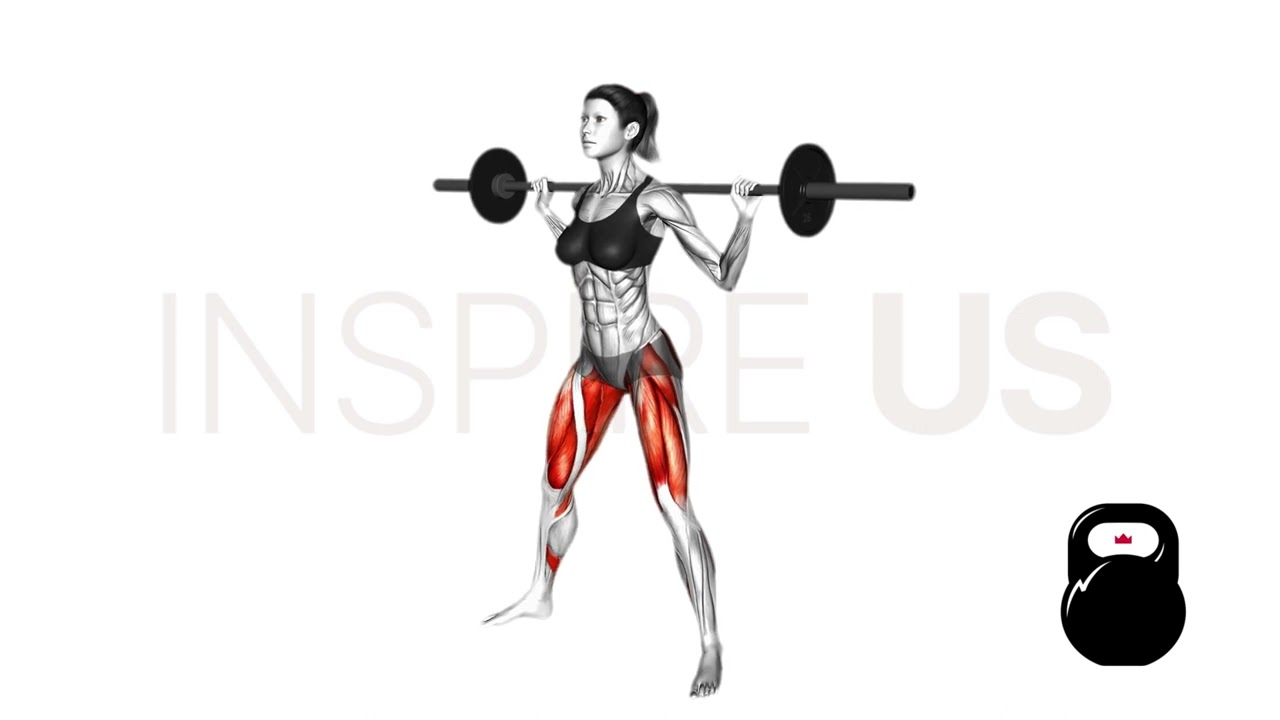Barbell Sumo Squat: Benefits, Muscles Worked, and More
The barbell sumo squat is an excellent exercise that targets the quadriceps, hamstrings, and glutes mainly. It is a strength training exercise that is a variation of the standard squat and is named as such due to the wide stance that resembles a sumo wrestler’s stance.
The barbell sumo squat is an effective exercise for building lower body strength, improving balance and stability, and increasing overall power. It can be incorporated into a comprehensive strength-training program or used as a standalone exercise for a quick lower body workout.
What is a Barbell Sumo Squat?
The barbell sumo squat is a compound exercise that works muscles of the lower extremity such as the quadriceps, hamstrings, and glutes muscles. It is carried out while the lifter's upper back is supported by a barbell that is loaded with weights.
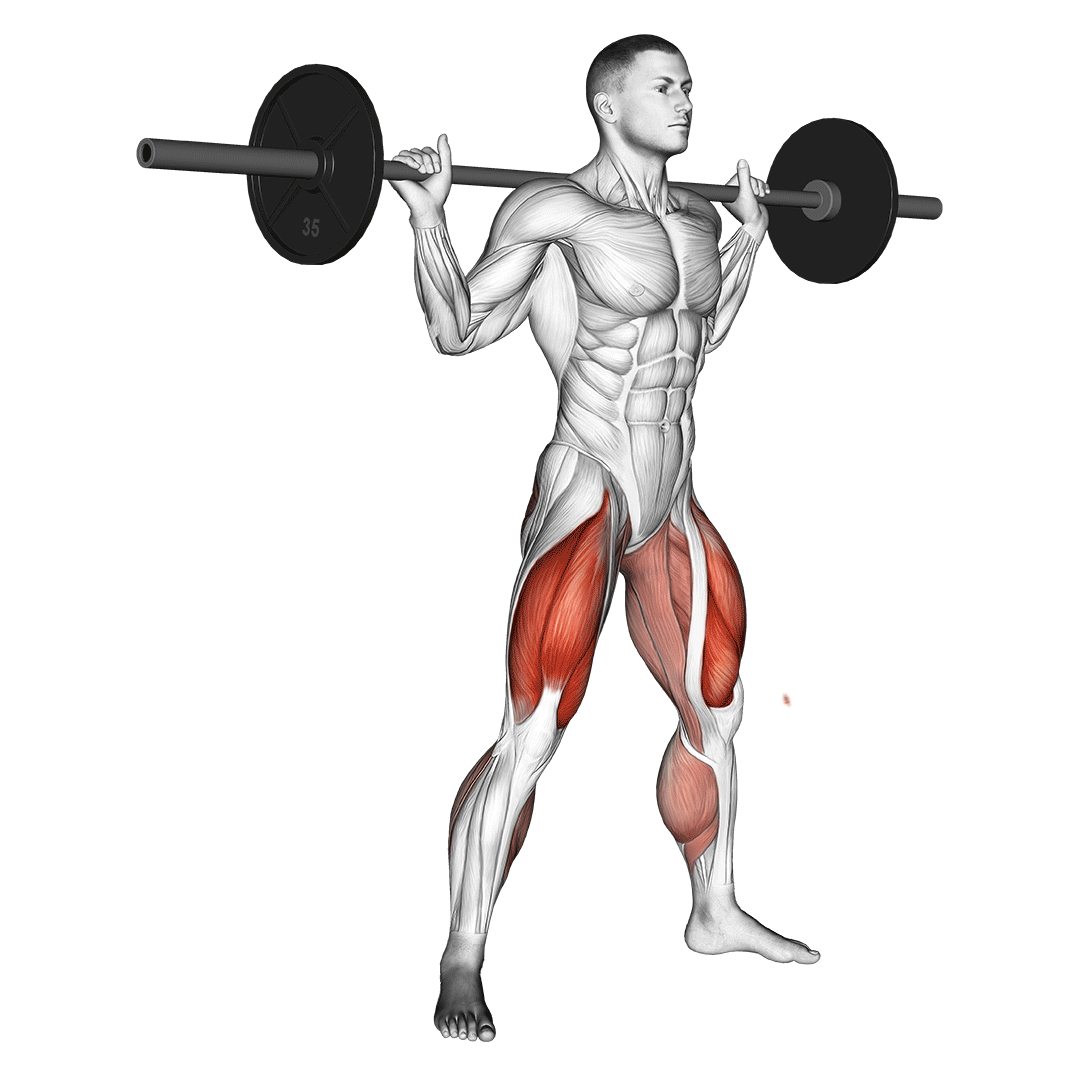
When performed with proper form and technique, the barbell sumo squat can be a safe and effective addition to a well-rounded strength-training program.
Weightlifters, powerlifters, and fitness enthusiasts favor the barbell sumo squat because it works a variety of muscle groups while enhancing lower body strength and power. By altering the stance width, bar positioning, and weight load, this exercise is adaptable to a range of training routines and progressions.
How to Perform a Barbell Sumo Squat
Performing a barbell sumo squat involves several key steps. First, the lifter should position oneself in front of the barbell, which should be placed on a rack at a height that is comfortable to lift from.
The lifter should then approach the bar, ensuring to maintain a good posture and keeping the chest up. Next, the lifter should grip the bar with both hands, keeping the hands shoulder-width apart or slightly wider, depending on the comfort level.
Once the lifter has a firm grip on the bar, position the feet wider than shoulder-width apart, with the toes pointing outwards at an angle of around 45 degrees. Ensure that the feet are firmly planted on the ground and that the weight is evenly distributed across both feet.
To perform the squat, the lifter slowly lowers the body, keeping the back straight and chest up, while bending the knees and hips. Lower the body until the thighs are parallel to the floor as this marks the bottom of the movement. The lifter should then push through the heels and engage the leg muscles and glutes to return to the starting position.
It is important to keep the knees in line with the toes throughout the exercise to prevent injury and optimize muscle engagement. To finish a set, repeat these movements for the necessary number of reps.
Muscles Involved in a Barbell Sumo Squat
A barbell sumo squat is a compound exercise that targets several muscle groups in the lower body. The primary muscles involved in the exercise are the quadriceps, hamstrings, and glutes.
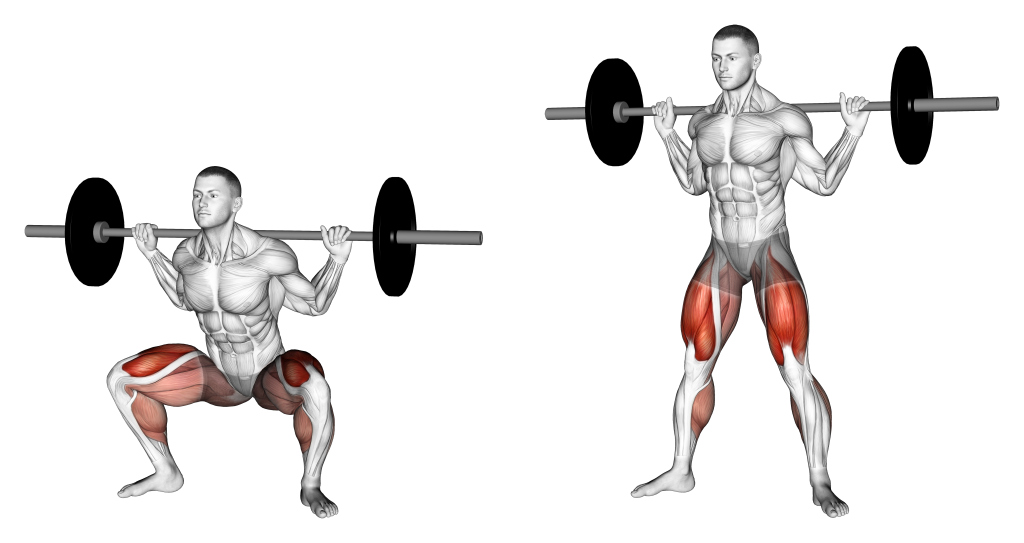
As the lifter descends into the squat, these muscles are activated to lower the body toward the ground. Once the lifter reaches the bottom of the squat, the muscles are fully engaged, and the glutes are particularly activated.
In addition to the quadriceps, hamstrings, and glutes, the barbell sumo squat also engages the adductors, which are located on the inside of the thighs. The adductors are involved in bringing the legs together and are activated as the lifter moves from the bottom of the squat back to the starting position.
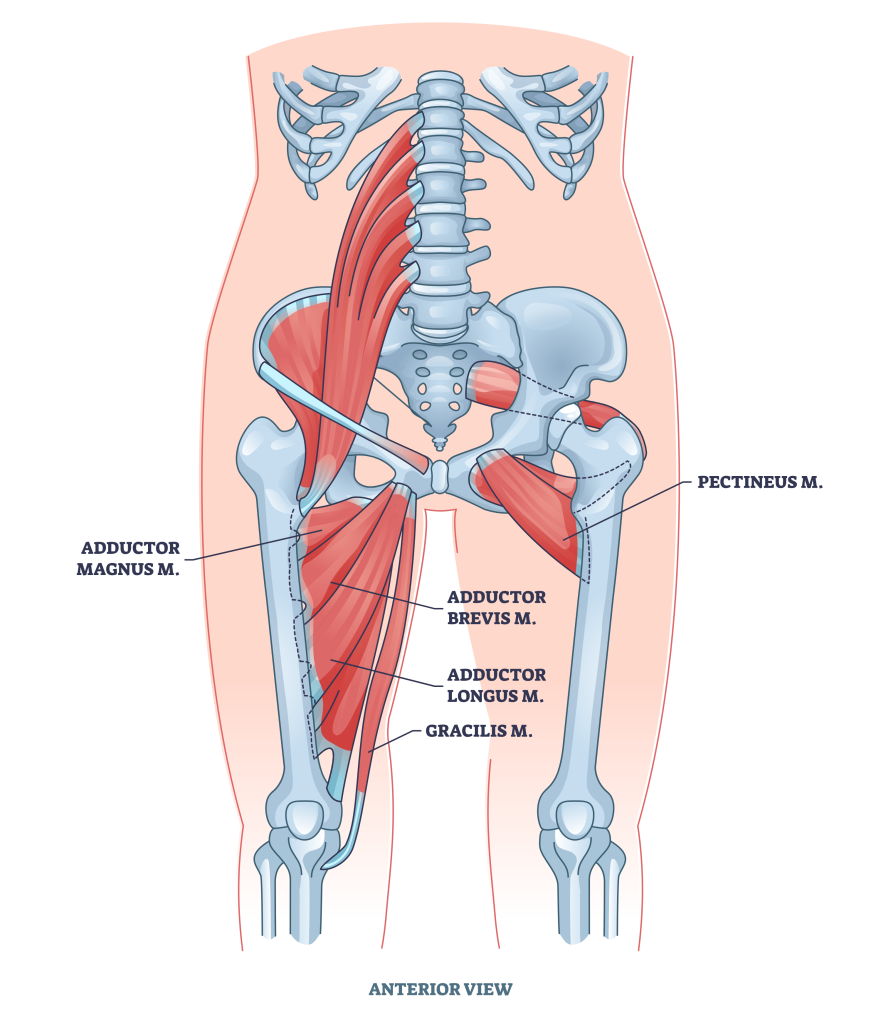
The lower back muscles and core muscles are also involved in the barbell sumo squat as they help maintain proper posture and stability throughout the exercise. The calf muscles, particularly the soleus, and gastrocnemius, are also engaged to provide support and stability during the lift.
Overall, the barbell sumo squat is a full-body exercise that mainly targets the lower body muscles, including the quadriceps, hamstrings, glutes, and adductors. By engaging multiple muscle groups, the exercise can help improve overall lower body strength, power, and endurance.
Benefits of the Barbell Sumo Squat
The barbell sumo squat is a very efficient workout that enhances the lower body and overall physical conditioning in a variety of ways. This exercise works several lower body muscle groups, including the quadriceps, hamstrings, and glutes, which is one of its main advantages.
The barbell sumo squat serves to develop total strength, power, and endurance by working these muscles, which can ease the performance of daily tasks and athletic performance.
Improved Balance and Stability
The barbell sumo squat can help to increase lower body strength as well as balance and stability. This is because lifting heavy weights while maintaining good posture and balance is a challenging activity that can enhance proprioception and body awareness.
Improved Core Strength
The barbell sumo squat also has the important advantage of enhancing total core strength. To maintain appropriate posture and support the lower body during the lift, the core muscles, which include the abdominals and lower back muscles, are worked throughout the exercise.
This may result in increased total core strength, which can aid in lowering the risk of injury and enhancing general fitness.
Versatility
The barbell sumo squat is a remarkably adaptable exercise that can be altered to accommodate a range of fitness levels and training objectives. The exercise can be modified to suit different needs and tastes by changing the stance width, bar positioning, and weight load.
This can support maintaining the difficulty and interest level of workouts, which can boost motivation and increase adherence to a regular exercise schedule.
Barbell Sumo Squat Alternatives
1. Kettlebell Sumo Squat
The glutes, quadriceps, and hamstrings may all be strengthened with the help of this exercise, which also helps to improve balance and stability. It can be a fantastic addition to a lower-body workout regimen.

To perform a kettlebell sumo squat start from a position of standing with feet wider than shoulder-width apart and toes pointed out at a 45-degree angle. The next step is to place both hands in front of the body and hold a kettlebell by the horns.
Make sure the knees are in line with the toes as you squat down while engaging your core and maintaining a raised chest. Drive through the heels to return to the starting posture once the thighs are parallel to the ground. Repeat as many times as necessary.
2. Dumbbell Sumo Squat
This exercise can assist in increasing general lower body strength and stability because it specifically targets the muscles in the lower body, such as the glutes, quadriceps, and hamstrings. To prevent damage, it is crucial to keep your form correct throughout the exercise.
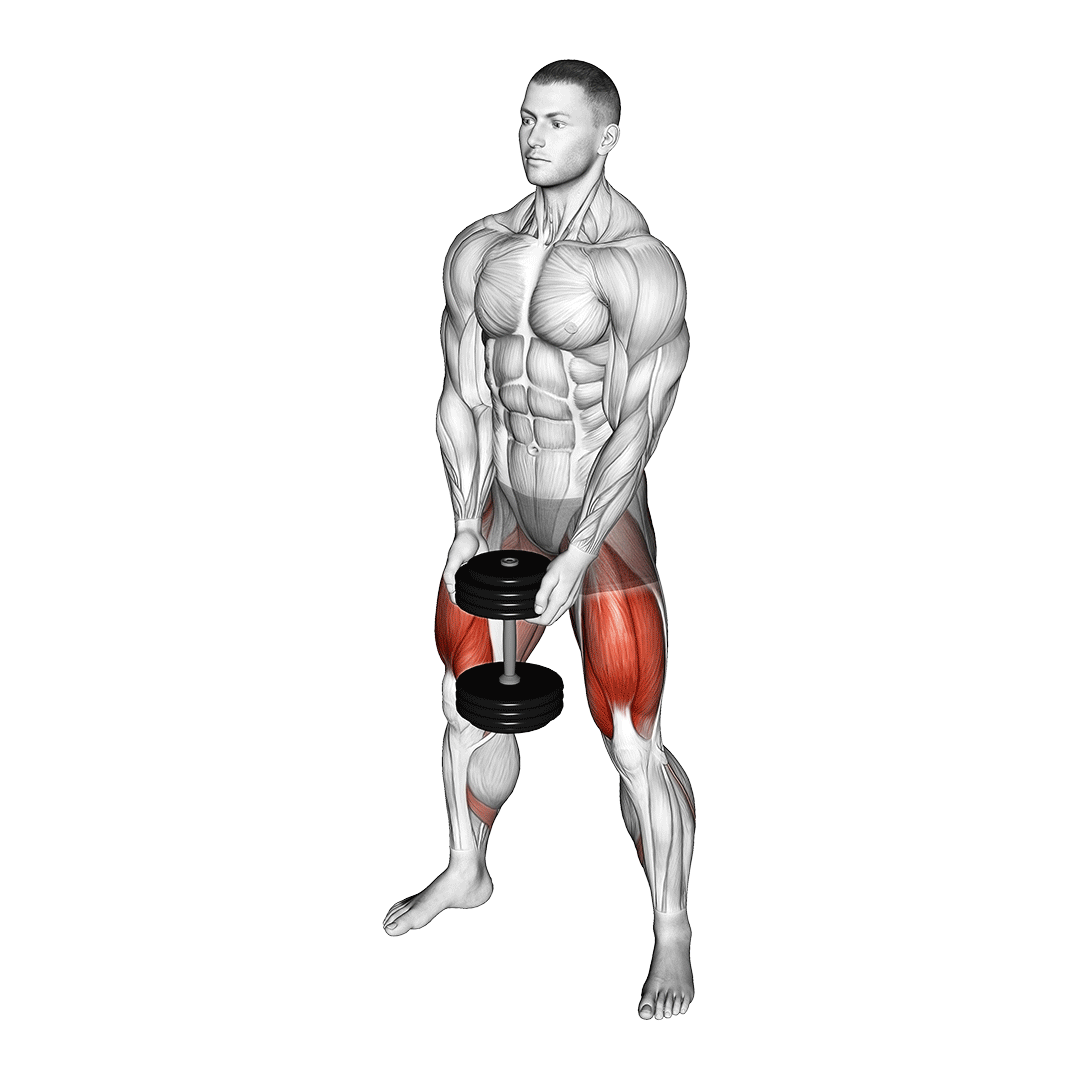
To perform a dumbbell kettlebell sumo squat, use a pair of dumbbells that are the right weight for an individual’s degree of strength. With the toes pointed outward at a 45-degree angle, stand with the feet slightly wider than shoulder-width apart.
Dumbbells should be held by the sides, hands facing inward. Next, bring the body into a squat position while ensuring that the knees cross the toes. Drive through the heels to return to the starting posture once the thighs are parallel to the ground.
3. Sumo Deadlift
The glutes, hamstrings, and lower back are among the posterior chain muscles that are worked during this exercise. Starting from a standing position with feet wider than shoulder-width apart and toes pointed out at a 45-degree angle, one should perform a sumo deadlift.

After that, hold the barbell in front of the body with the palms facing down and the hands inside your legs. Lift the barbell up while maintaining a straight back and a lifted chest by using the core. After a brief pause, slowly lower the barbell back to the ground once it has reached hip height.
Final Thoughts
The barbell sumo squat, in conclusion, is a flexible and effective exercise that works a variety of lower body muscles, including the glutes, quadriceps, and hamstrings. This exercise can increase general lower body strength and stability and is an excellent complement to any lower body workout program.
The sumo squat is a great alternative to conventional squatting since it uses a wide stance and engages the inner thighs. The ability to lift greater weights and further tax the muscles is another benefit of using a barbell.
To prevent injury, it is crucial to have perfect form throughout the exercise, start with lesser weights, and then increase the resistance. One can increase their lower body strength, muscular definition, and general fitness by including the barbell sumo squat in their comprehensive fitness regimen.
References
1. John D, Liebenson C. How should I squat?. Journal of bodywork and movement therapies. 2013 Jan 1;17(1):137-9.
2. Deniz E, Ulas YH. Evaluation of muscle activities during different squat variations using electromyography signals. In10th International Conference on Theory and Application of Soft Computing, Computing with Words and Perceptions-ICSCCW-2019 2020 (pp. 859-865). Springer International Publishing.

